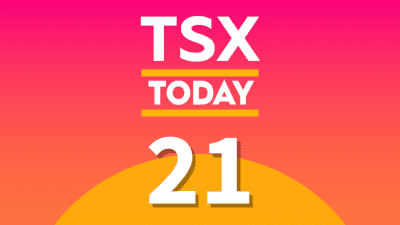Canadians should be excited about additional TFSA and RRSP room as we enter 2022. Because interest rates are still near historical lows, I often encourage investors to invest in quality stocks (instead of in savings accounts, GICs, or even bonds) in their TFSAs or RRSPs.
However, this month, Larry Berman, the chief investment officer and partner at ETF Capital Management, noted on BNN that in 2021, Biden’s massive stimulus helped boost earnings in the U.S. stock market, which was now trading at a 10-15% premium. He predicted that “next year, we could see earnings growth and its multiple come down a little. Largely a flat year.” So, there’s no need to rush into the stock market, including the Canadian stock market, which moves largely in tandem with the U.S. stock market.
Additionally, Berman thinks that “in an inflationary environment, value [stocks] will outperform growth [stocks].” So, investors should be careful around large-cap tech names that have high multiples and tend to do well in inflationary environments.
That said, it’s a market of stocks. So, with careful selection, investors can still find attractive stocks for long-term investment.
Should you invest in your TFSA or RRSP in 2022?
The TFSA and RRSP can both be used to invest for retirement, but comparing the TFSA to the RRSP, the TFSA is much more flexible. Specifically, you can withdraw from it any time tax-free and recontribute the withdrawn amount as soon as in the next calendar year. Therefore, you can also use your TFSA to invest for other big-ticket items, such as a vacation, car, or home.
Simultaneously, it might be too flexible, as it’s too easy to withdraw from the TFSA. If you don’t want to tap into your investment funds to hinder the tax-free compounding effect, the nature of the TFSA could be problematic for you.
Ideally, you would want to contribute to and invest in both the TFSA and RRSP. However, there should be a priority. If you’re a high-income earner, you should contribute to your RRSP first, ideally, the year before so that you can lower your tax bracket and pay lower taxes for the prior year and use the tax refund to contribute to your TFSA in the subsequent year. If you expect to be in a much higher tax bracket in the future, then you should contribute to your TFSA first to accumulate RRSP room.
U.S. dividend stocks for your RRSP
Another benefit of the RRSP is that there’s no withholding tax on U.S. qualified dividends. This means you could receive full dividends from U.S. dividend stocks like AbbVie, Merck, and Realty Income for an average yield of just over 4% today. It would be a good idea to ensure you’re at least not overpaying for your stocks. According to the analyst consensus 12-month price targets, AbbVie is fairly valued, Merck is undervalued by 18%, and Realty Income is undervalued by 12% at writing.
TFSA investments
While you generally want to invest for total returns, unless you’re near or at retirement, it’s even more critical to think this way when you invest in your TFSA. The tax-free compounding over decades is no joke. It could mean saving thousands of dollars of taxes every year if you employ a solid growth investing strategy.










